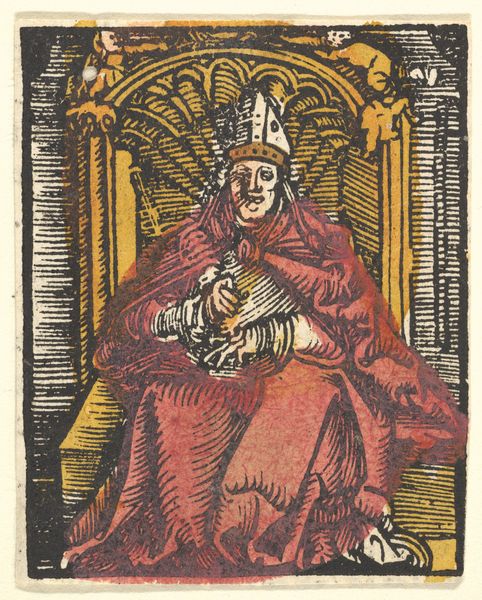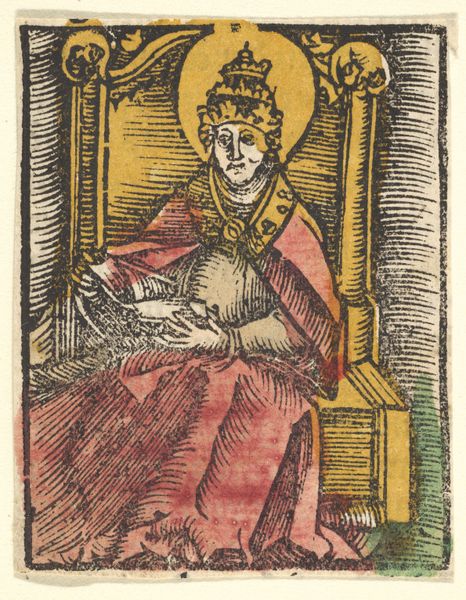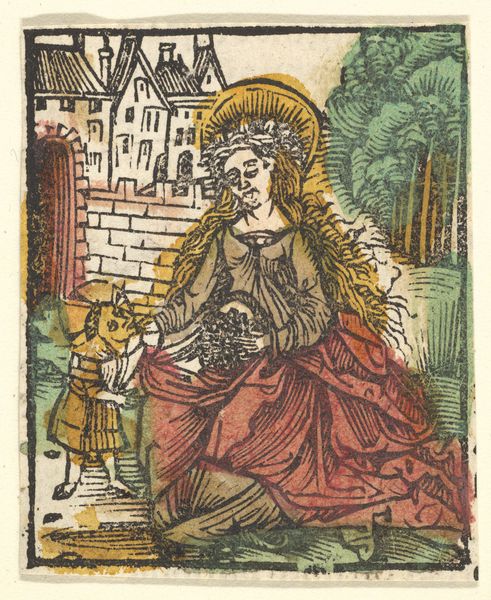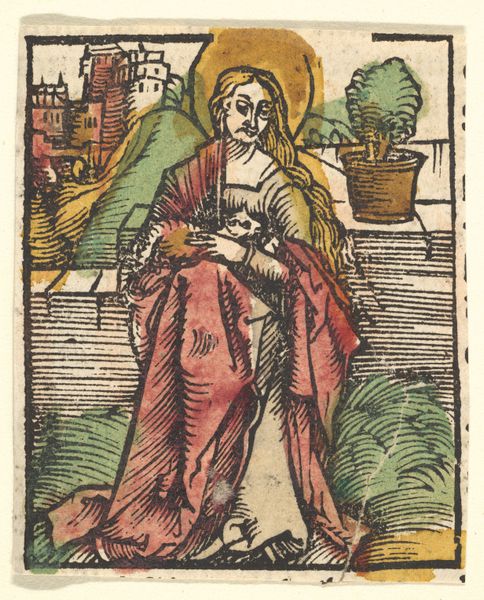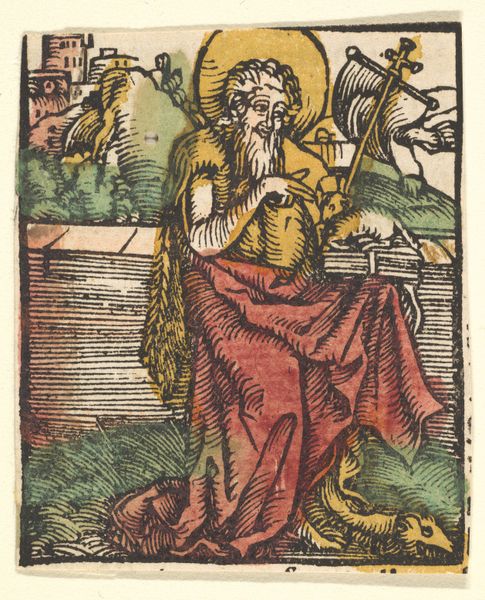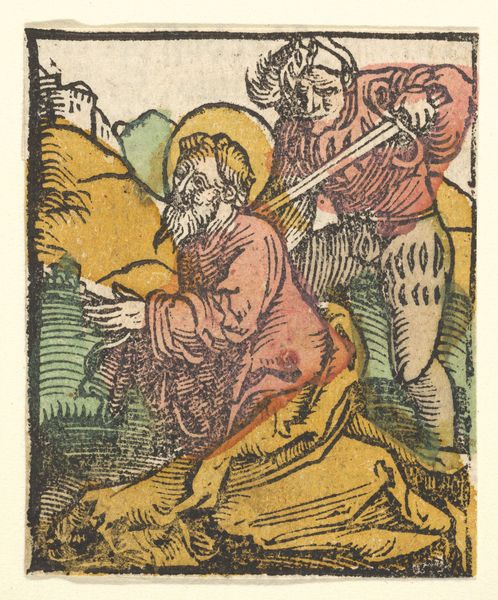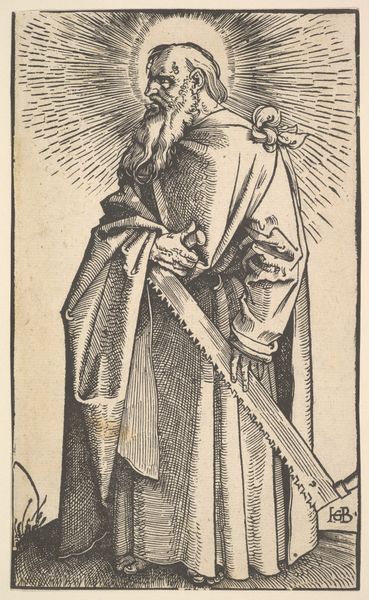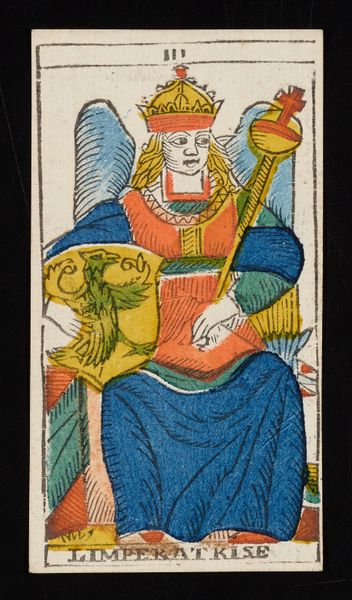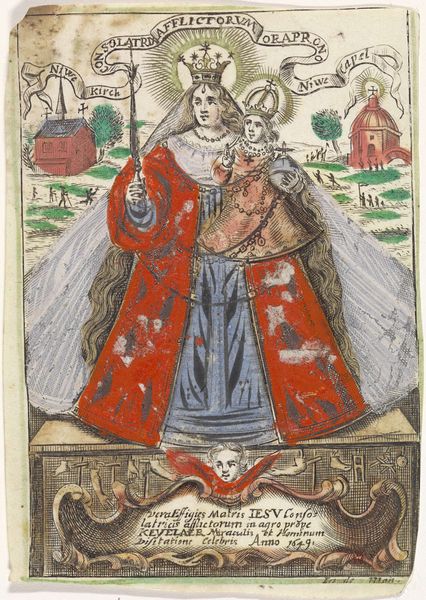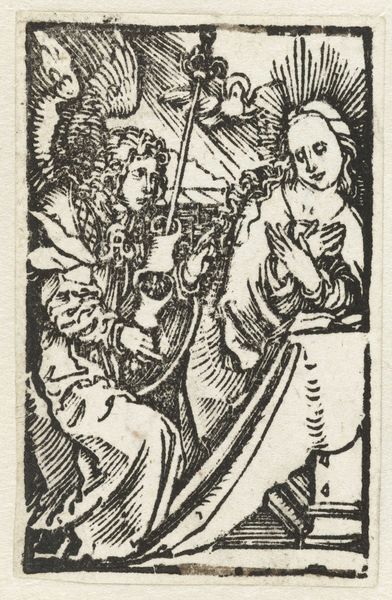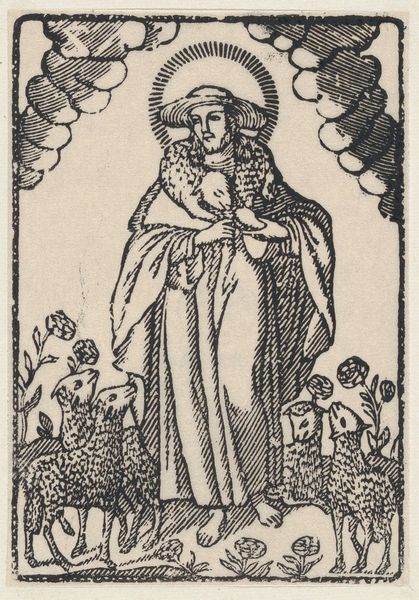
drawing, print, woodcut
#
drawing
# print
#
coloured pencil
#
woodcut
#
northern-renaissance
Dimensions: Sheet: 2 7/16 × 1 15/16 in. (6.2 × 5 cm)
Copyright: Public Domain
Editor: This woodcut, "St. Erasmus (copy)," from somewhere between 1512 and 1600, is currently housed at the Metropolitan Museum of Art. It's a striking image. What catches my eye is the starkness of the lines combined with the muted colors. How do you interpret this work? Curator: It is remarkable how effectively this relatively small print, with its coarse lines and simple colour palette, can evoke a powerful sense of awe and veneration. Baldung was working within a tradition steeped in symbolism. Look closely at the figure of St. Erasmus himself: What elements of his presentation stand out to you? Editor: Well, he's clearly a religious figure, based on his hat and robes. He appears to be holding something… are those his intestines wound around a windlass? Curator: Precisely! That is a gruesome detail, isn't it? The windlass is the attribute of St. Erasmus, referencing the method of his martyrdom. Imagine the visceral impact this image would have had on a 16th-century audience deeply familiar with the stories of the saints and their suffering. Editor: That makes so much more sense. So, the beauty of the execution is juxtaposed with the brutality of the narrative. I suppose, for the original audience, the symbols would’ve brought immediate recognition and perhaps reinforced their faith. Curator: Exactly. The image becomes a mnemonic device, a way to remember and internalize the stories and values associated with the saint. In a world where visual imagery played a vital role in shaping belief, this woodcut operates on many levels – aesthetic, religious, and psychological. We still connect to those emotional links centuries later. Editor: So much to unpack from one small print! Thanks for helping me see beyond the surface. Curator: My pleasure. Art offers unique views into the past and allows us to connect to it still.
Comments
No comments
Be the first to comment and join the conversation on the ultimate creative platform.
